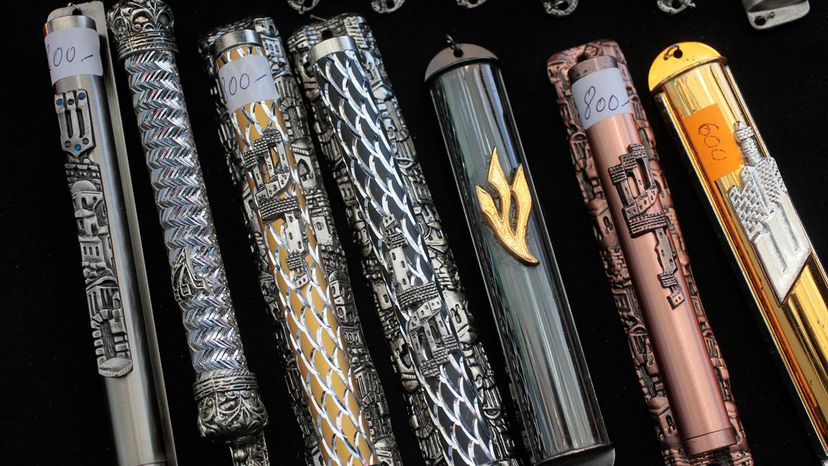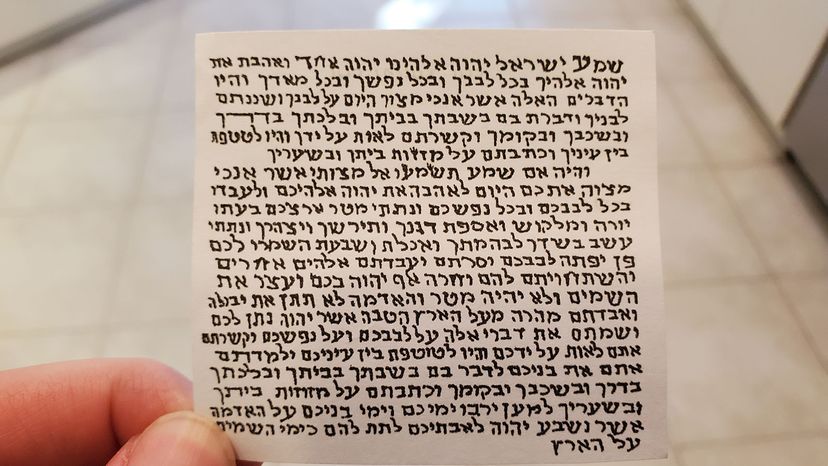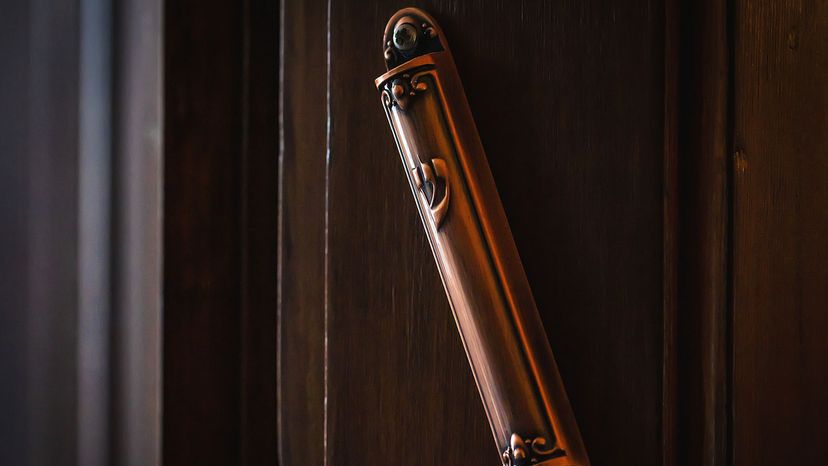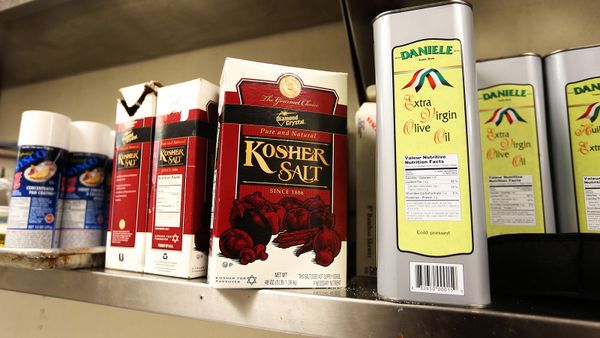
Key Takeaways
- Mezuzah is a decorative case affixed to door frames in Jewish homes, containing sacred prayers inside.
- Inside every mezuzah is a tightly wound scroll with the Sh'ma and V'ahavta prayers, written on kosher parchment.
- To hang a mezuzah, recite a blessing, place it on main doors and inspect the scroll every seven years for damage.
If you're not Jewish, you may be unfamiliar with the small decorative case affixed to the right door frame of some homes or apartments. That case is called a mezuzah, and while the eye-catching designs on its outside get most of the attention, it's what's on the inside of a mezuzah that really counts.
For thousands of years, Jewish families have marked the doorposts of their home in fulfillment of a commandment written in the Torah (the first five books of the Hebrew Bible starting with Genesis). The commandment appears twice in the book of Deuteronomy in connection with two of the most important prayers in Judaism, known as the Sh'ma (or Shema) and the V'ahavta. In Deuteronomy, after recording each of the prayers, God commands his people to "write" them "upon the doorposts of your house and upon your gates."
Advertisement
The word mezuzah means "doorpost" in Hebrew. The first time the word appears in the Torah is in the Exodus account of Moses freeing the Israelites from bondage under Pharoah. When God is about to pronounce the 10th and final plague on the Egyptians — the death of the firstborn sons — he commands the Jewish people to mark their doorposts with blood from a sacrificial lamb so that the "destroyer" will pass over them and let their children live.
While the later commandments in Deuteronomy to hang a mezuzah have nothing to do with warding off plagues, the practice still resonates with modern Jews, offering rich spiritual blessings and even physical protections to those who observe it.
"It's a reminder of our personal Jewish identity, who we are as a people and the values that are important to us," says Alex Shapero, program director at MyZuzah, an organization that provides kosher, fair trade mezuzahs to homes around the world. "The mezuzah is a symbol that connects, protects, and unites Jews. It is an external marker that Jews proudly live here and that we're not afraid to say so."
Advertisement




